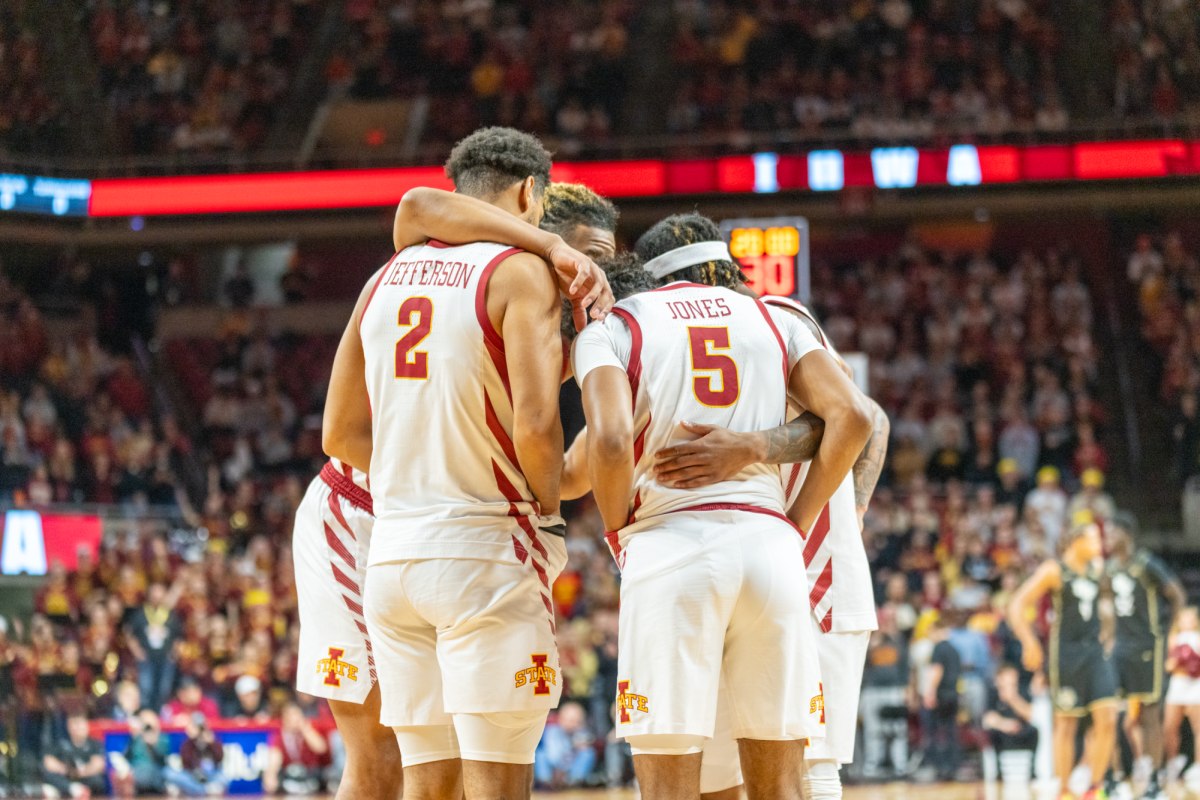Football coaches’ salaries consistently higher than professors’
June 23, 2009
Amid layoffs, bailouts and a poor economy, the average college football coach’s salary remains safely above $1 million.
On July 16, ISU Head Football Coach Paul Rhoads finalized his contract, receiving $950,000 for his first season. The new contract makes him the highest-paid member of the ISU faculty before he ever coaches a game.
“It’s a fairly sizable chunk, but at the same time, that is kind of what the market dictates,” said Ron Deiter, professor of economics.
When compared to his peers, Rhoads makes less money than most coaches at BCS schools. Based on the 2008 salaries of NCAA coaches, Rhoads’ salary would tie him with Tommy West of Memphis as the 70th-highest paid coach in the country. It would also make him the lowest-paid coach in the Big 12.
“It’s sad that that’s what the market is, to be honest with you,” said Government of the Student Body President Jon Turk. “Almost a million dollars is what we pay someone who coaches football, when we have teachers who make $30,000 a year… I think it’s a lot of money for a position like that, especially when that more than doubles what the university president makes.”
ISU President Geoffroy made $398,316 in 2008, about $30,000 more then Athletic Director Jamie Pollard.
“I know there are some people who, philosophically, would say that we shouldn’t be paying football coaches more than top professors or athletic directors, or whatever,” Deiter said. “The justification is that it is market driven. It is revenue-generating ability. If you have a good football coach and a successful football program, that is going to generate $10-15 million annually.”
Although Turk feels that $950,000 is too much to pay for a coach, he said he recognizes the fact that the going market value for college football coaches is higher than he wishes.
“I don’t fault the administration for essentially having to deal with what their predecessors have allowed the market for college coaches to be, which is in the hundreds and hundreds of thousands of dollar range,” Turk said. “To get a coach, this is what they have to pay, so I am not faulting them for that. I’m just faulting the whole system that has allowed us to get to such a level.”
Pollard acknowledged that he and Rhoads probably make too much money, but pointed out that with the market where it is at, there is no way to spend less and still be competitive.
“Our programs are funded primarily by people coming to the games and making donations, and those people want to win,” Pollard said. “In order to win, you have to have the best, and in order to keep the best, you have to pay them what somebody else is going to pay them if you don’t. It’s market biased. I wish it wasn’t that way, but it is.”
Pollard said the revenue from the football program currently provides roughly 75 percent of the budget for the entire athletic department. That revenue is somewhat dependant upon how well the program does.
“A fair amount of people are here, win or lose, because they are going to support Iowa State. But the reality of it is, a successful football coach is worth their weight in gold, because that is what funds our department,” Pollard said.
“Without successful football, in the long run, you can’t stay at this level and be competitive, and we are a great example. There is a reason our facilities are where they are and why we are playing catch-up, and there is a reason why we are the smallest budget in the Big 12.”
Though the football program is important to the athletic department, it is difficult for some to accept that, in the current economy, coaches’ salaries should remain as high as they are.
“At what point do we find it OK to pay people who coach sports that much money when those resources can be distributed somewhere else, especially in such tight years like this year and next year,” Turk said.
Michael Owen, associate department chair of agronomy and president-elect of the Faculty Senate, said it is important to realize that the academic side of the university is separate from the athletic side.
“Where you see somebody who really is brand new coming up with a new contract, I’m sure some of the faculty would be concerned, given the current economic climate that we find ourselves in. But, I think we have to recognize that the athletic department is largely self-supporting,” Owen said.
On the academic side of the university, the salaries are significantly lower, with the average 12-month teacher — professors, associate professors, assistant professors and instructors — made an average of $109,760 in the 2008-’09 school year. Although that is a stark contrast to the $950,000 that Rhoads will make next year, economically it seems to makes sense, Deiter said.
“If you look at a typical faculty member, how do we determine the amount of revenue that is generated by that faculty member? In our department, for example, we have close to 400 majors…
“Of course, there is other revenue that is generated by faculty members,” Deiter said. “There are contracts and grants and that sort of stuff — but I don’t think there is a department that is generating $10-15 million in revenue.” He said people in America are often more likely to pay for entertainment than education.
That, in the end, seems to be the major reason for the pay difference: Entertainment generates more money than education.
“I wish that everybody had that opportunity. But, the reality is that they don’t, and we need to recognize that there are significant differences between the expectations of a Big 12 football coach and an academic professor,” Owen said. “Does that diminish the importance of the academic professor? Of course not.”






